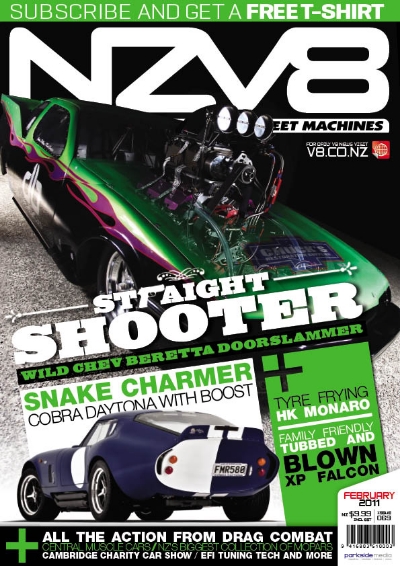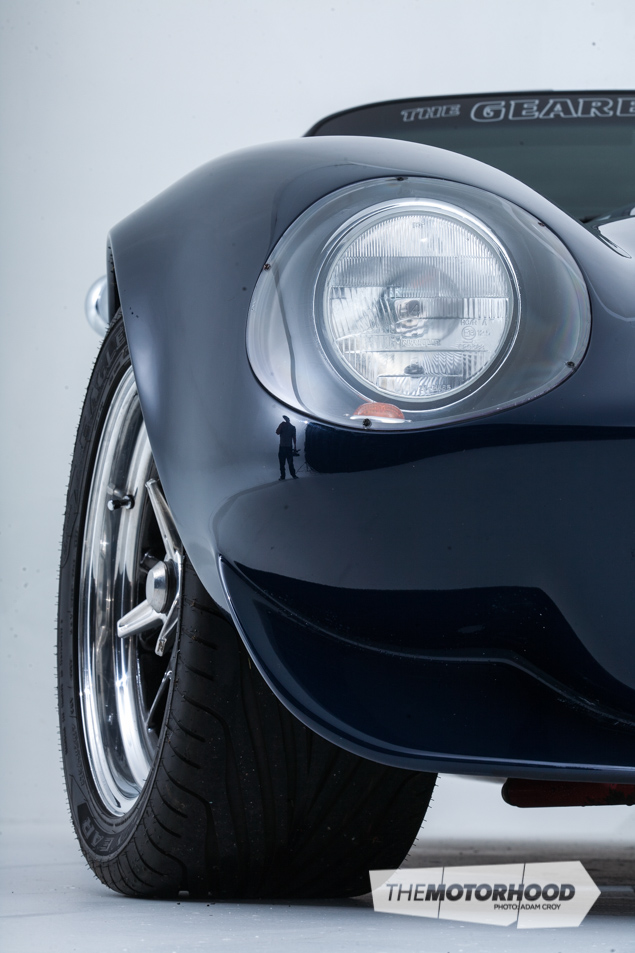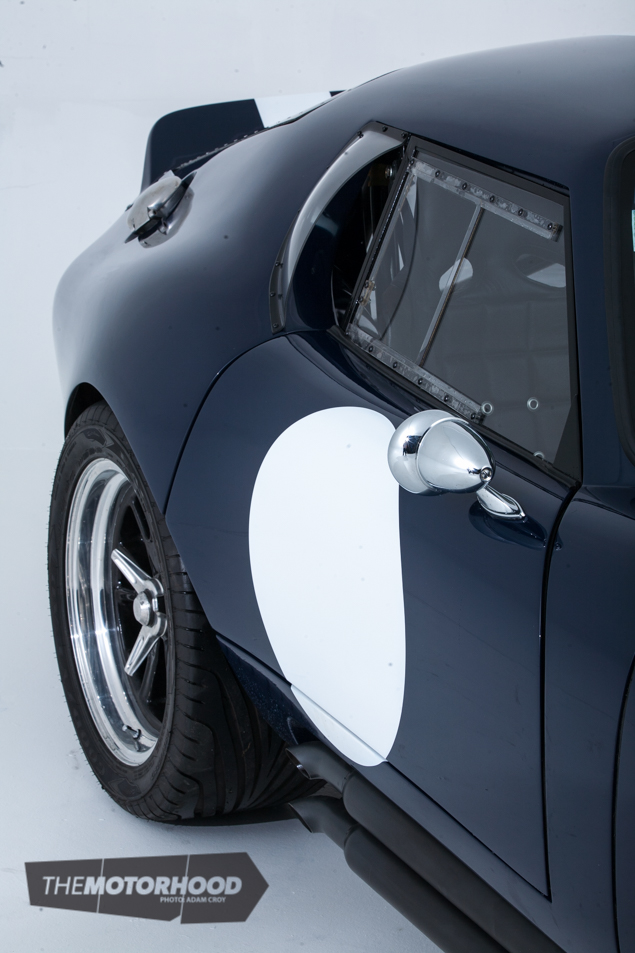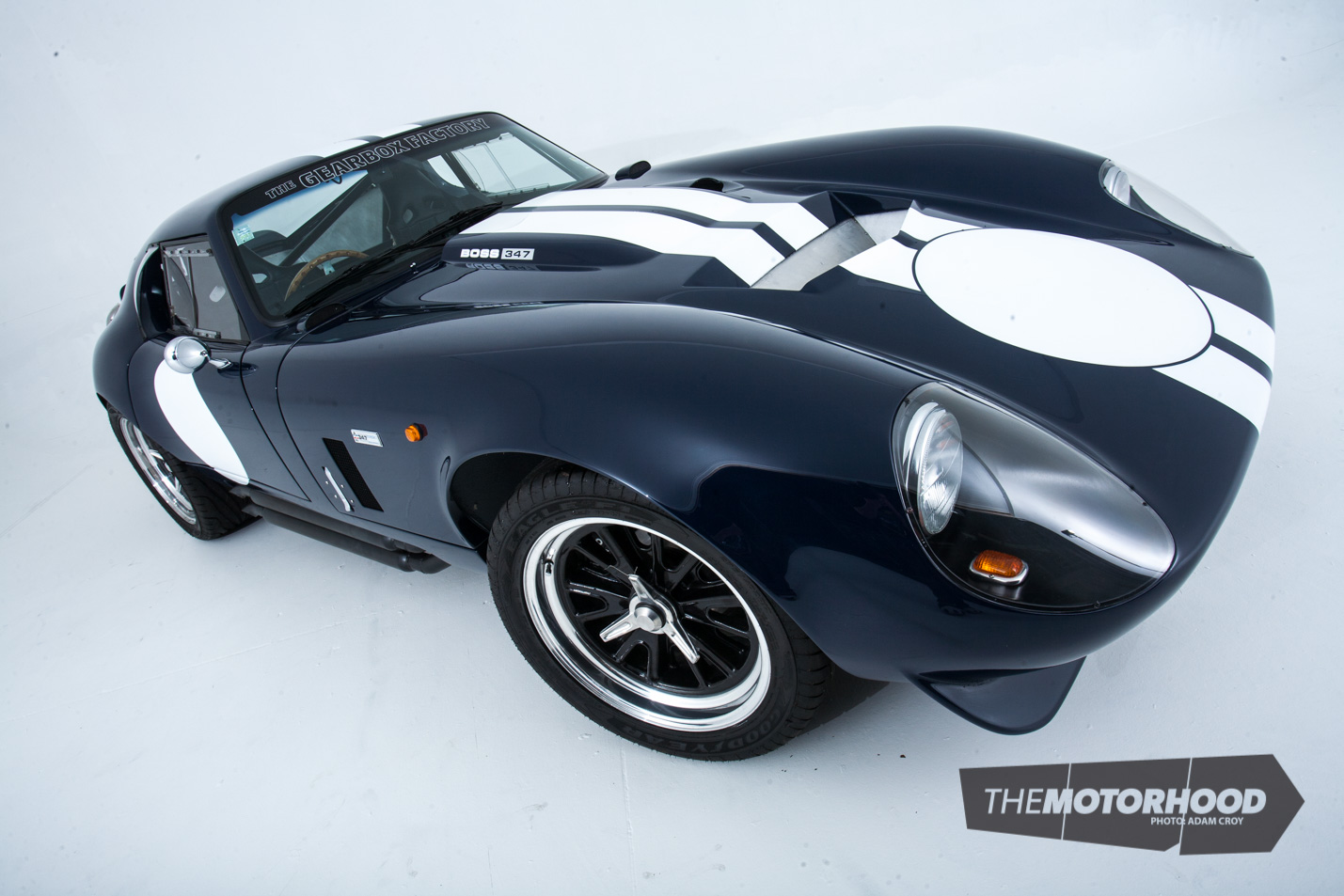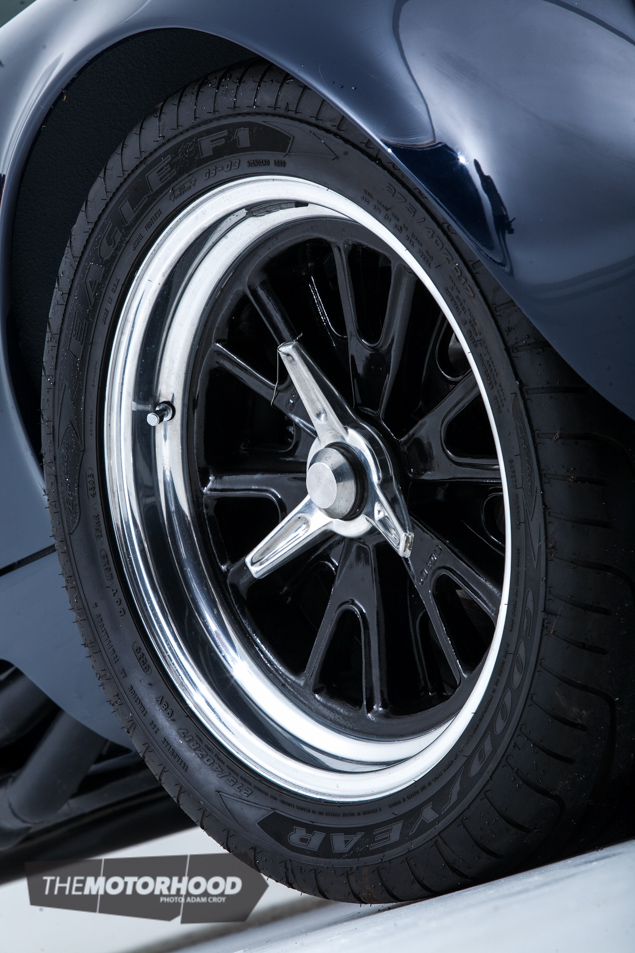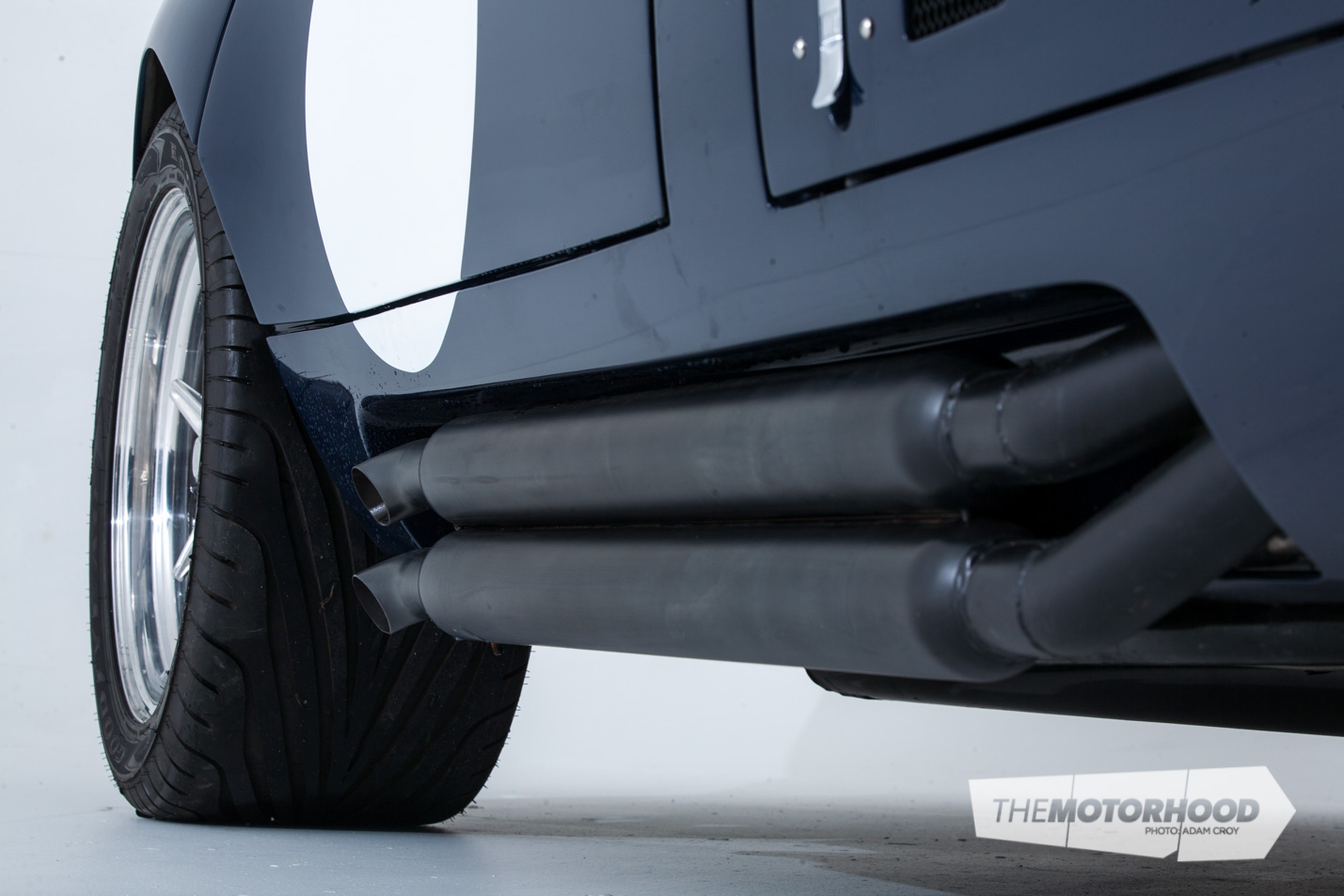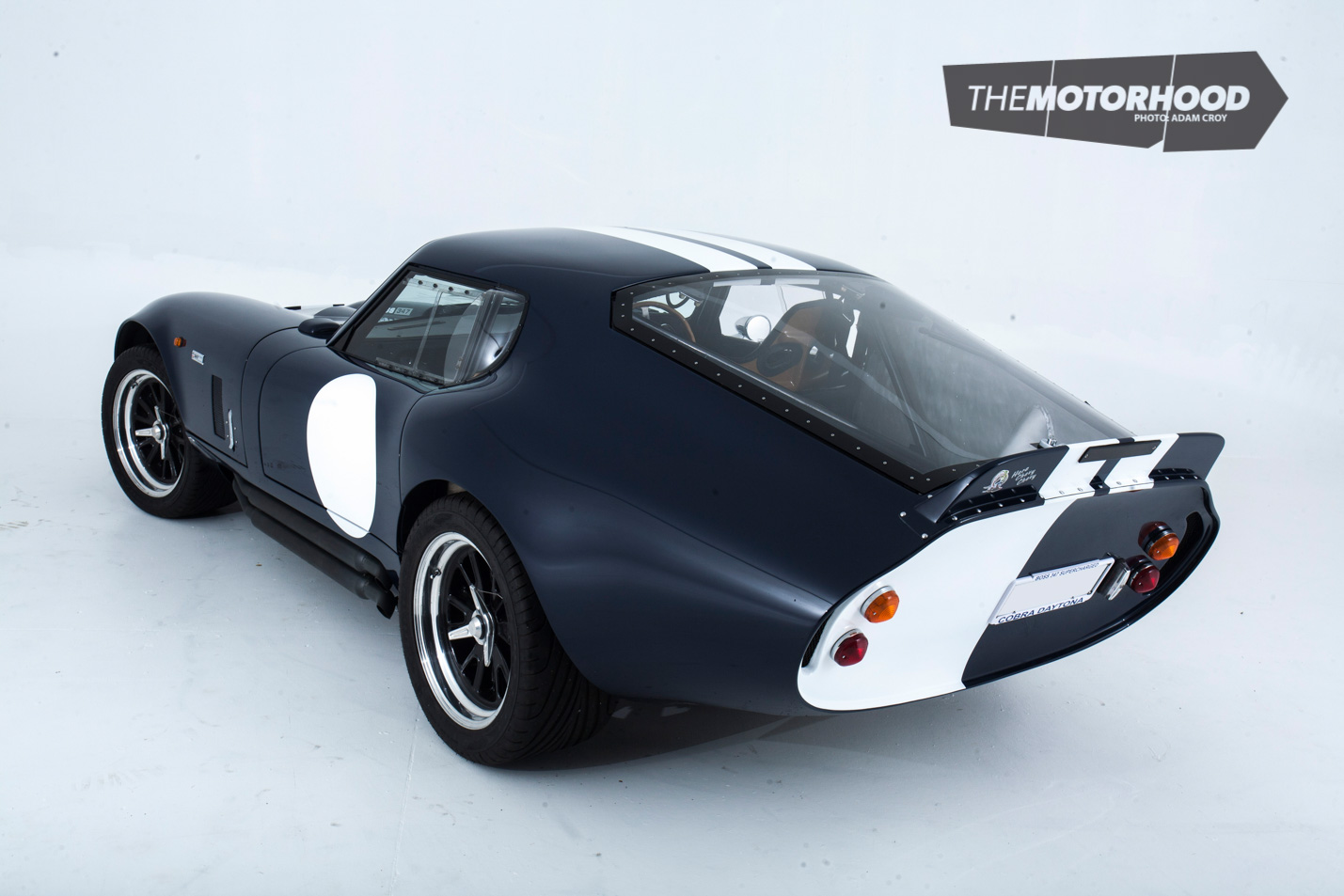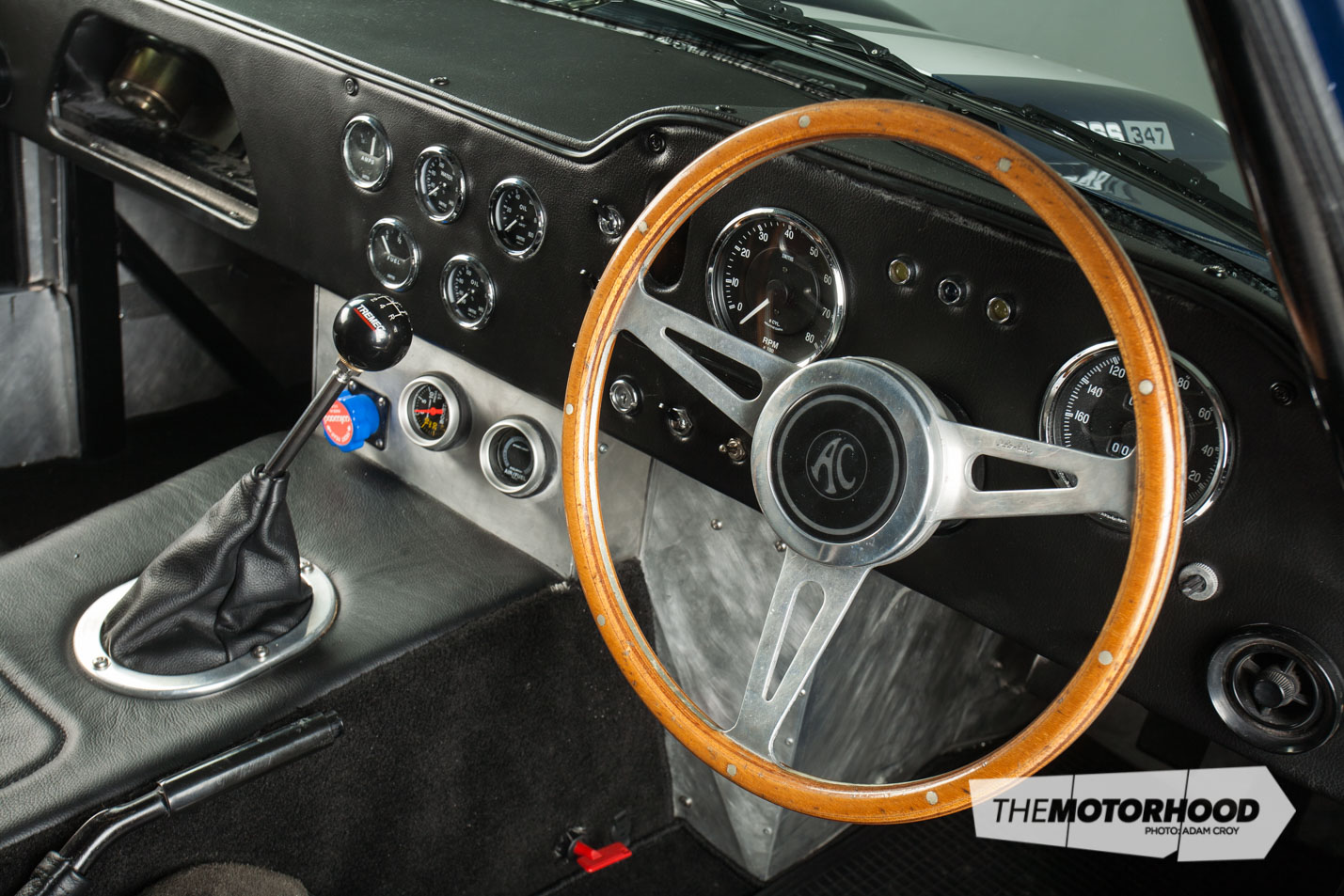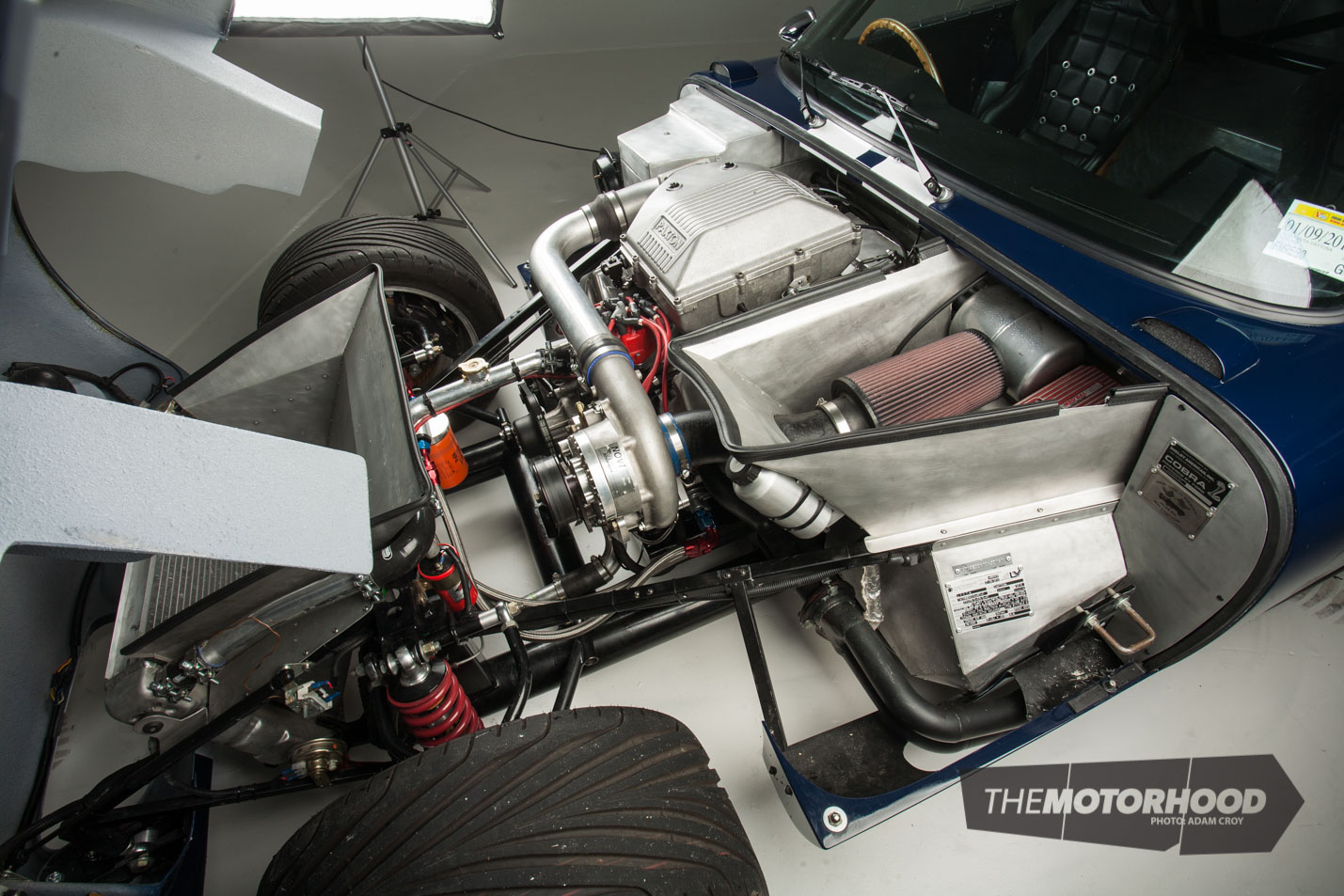data-animation-override>
“When a normal Cobra just doesn’t do it for you any more, what do you do? Build yourself a Daytona with a twist of boost, of course”
“I’m the ultimate Cobra fan,” says Keith Lane, the creator of this beautiful supercharged Daytona. He’s not kidding — the swoopy hard-top coupe is his third Cobra.
“Number one is still in the shed but soon to be sold to pay for the Daytona, number two was a race car that met its demise at Pukekohe Park Raceway, and this is number three,” he reveals.
So what drives a guy like Keith to the cars? “I used to have British sports cars — Triumph TRs, Austin Healys, and the like, but the Cobras are just something different.” If a common or garden variety Cobra is different, then Daytonas are really something else.

The story of how this car came to be is a lot longer than it should have been. In theory, it would have been on the road about six years ago, all going to plan. But when the body first arrived from America in 2002, Keith was bitterly disappointed. “The doors and bonnet didn’t fit, and the rear wheel arches were a different shape to each other,” he says. And that was merely the tip of the iceberg. The fact the car wasn’t a kit, as such, in which all parts were provided, also adds a great deal of complexity.

Luckily, as manager of The Gearbox Factory, Keith not only has the ability to turn a poorly built fibreglass shell into a work of art, he is also surrounded by like-minded and equally capable staff and friends. One of those, Adrian Penman, would soon become instrumental in the build. A Cobra guy himself, Adrian was an excellent sounding board for many ideas and a great helper when it came time to turn those ideas into reality.
But before any after-hours work at The Gearbox Factory could begin, the guys needed a chassis, not to mention a straight body.

The chassis side of things was handed over to Kiwi Race Cars (formerly Graham Berry Racecars). As a producer of local Cobra replicas, the Kiwi Race Car guys know their stuff when it comes to turning strips of metal into structural perfection. The Daytona was a tad different from the many other chassis they’d built, though. Based on a genuine Daytona chassis (of which only six were ever built) the main rails were made from oval tube, with a ladder-type set-up joining them together.
Rather than get the guys to build suspension arms as they would for most customers, Keith and Adrian would do this themselves, using knowledge gained from Keith’s race car. Employing rose-jointed arms, custom sway bars, QA1 shocks, and Eibach springs, the suspension is tuned to precision.
While all this was going on, Anglo American Restorations — which painted Keith’s first Cobra — was given the task of sorting out the body work. Cutting, slicing, sectioning, glassing, and smoothing it to perfection was a time consuming task. However, the guys at Anglo American haven’t earned their great reputation by doing a bad job, and the Daytona bodywork is a credit to them. The deep indigo blue paint was also applied at Anglo American, and is reminiscent of the Viking blue found on the first of the six genuine cars produced.

While those half dozen were only ever built as race cars, and were known to be hot and uncomfortable to drive, Keith’s was to be a dedicated streeter, so interior comfort and drivability played a big part in the build.

A roll cage holds the chassis rigid, but other than that, no race items are apparent. Instead you’ll find beautifully trimmed leather seats and a unique Moto-Lita steering wheel. Period-style Smiths gauges not only complete the look, they also keep a close eye on the mountain of metal up front.

Because Keith wasn’t creating an exact replica, he felt some freedom when it came time to choose an engine. As well as being the only car in the country that looks like this, the engine combination also ensures there’s nothing else like it on the road. It’s based on a bare Boss block purchased from Ford Racing, and Keith had work colleague and friend Steve Hamilton piece together the bottom end with forged Scat internals. Tony Marsh from Marsh Motorsport ported the Trickflow heads, which seal the combustion chambers with an 8.5:1 compression ratio. With a solid roller cam fitted for high rpm stability and to make the most of the airflow provided by a Paxton supercharger, the combo is good for 680hp. This is achieved with just 6psi of boost, and is completely unstressed; it’s a great package that is just as happy around town as it is stretching its legs should the occasion arise.

Making that package even more impressive is the fact that the car weighs in at just under 1050kg and comes with a perfect 50-50 weight split, thanks to how far back the engine is mounted in the long bay.
Running a business that specialises in transmission repairs and sales, you’d expect the car to have a pretty cool cog swapper in place. And it does. As a supplier of Tremec transmissions, Keith opted to fit a Tremec TKO600 five-speed alloy-cased manual box. Before being fitted to the car, Gearbox Factory employees Chris Hogg and Tony Burns fitted it with revised ratios and synchros. Another Gearbox Factory–supplied part, a McLeod twin-plate clutch and alloy flywheel, was also fitted, and is perfectly suited to transferring the power from the supercharged small-block.
A hydraulic centre acting release bearing finishes off the setup and makes for excellent clutch pedal feel, of which Keith is deservingly proud.

The guys decided to fit a Nissan 300ZX diff with a 3.7:1 ratio crown wheel and pinion to provide drive to the 17×10-inch rear wheels. The custom-made PS Engineering rims are wrapped with sticky 285/40R17 tyres, while the same size rims up front get slightly narrower 275-wide treads. It’s a big footprint for such a small vehicle.

Another Gearbox Factory staff member to get involved was Chris Pointen, who created the complicated header arrangement on the car. Despite the lack of space, he managed to include a balance pipe to improve the exhaust tone through the side-exiting pipes.
Although the car is light, this is a performance machine and as a result it’s got seriously large brakes. Six-pot calipers were chosen from the Wilwood catalogue to suit the front, while slightly smaller four-pots with a separate handbrake caliper have been fitted at the rear. With 320mm and 270mm rotors respectively, they’ll easily haul the car up from the insane speeds it’s capable of.

It’s easy to forget the Cobra was scratch built. Every last nut and bolt needed to be sourced, because nothing factory is available. Knowledge gained from building the traditional Cobras is useful, of course, but constructing something like this is still a mammoth task. After eight years of long nights and working alongside some top tradespeople and great mates, Keith has achieved it, and the outcome self-evidently makes all that effort worthwhile.
While the original six cars may have been ground-breaking at the time, and are worth millions of dollars these days, they’re neither as powerful nor refined as this one is. As a result, this car can, in its own way, be described as priceless. The smile on Keith’s face every time he fires the Daytona into life sure is.
2010 Shelby Cobra Daytona replica
- Engine: 347ci small block Ford, Boss four-bolt block, Scat crank, Scat rods, Trickflow Twisted Wedge heads, Comp Cams solid roller cam, custom sump, Paxton 1200 supercharger, Aeromotive boost referenced fuel pressure regulator, MSD ignition, Holley fuel pump, custom headers, Griffin alloy radiator
- Driveline: Tremec TKO600 gearbox, custom ratios, custom synchros, McLeod twin-plate clutch, McLeod flywheel, Nissan 300ZX diff, 3.7:1 ratio, custom driveshaft
- Suspension: Custom arms, QA1 shocks, Eibach springs, rose jointed, custom sway bars
- Brakes: Wilwood six-piston front calipers, 320mm rotors, Wilwood four-piston rear calipers, 270mm rotors
- Wheels/tyres: 17×10-inch PS Engineering rims, 275/40R17 and 285/40R17 tyres
- Exterior: Indigo blue paint
- Chassis: Four-inch round tube ladder-style chassis, full roll cage
- Interior: Leather / Kevlar race seats, Smiths gauges, Moto-Lita steering wheel
- Performance: 680hp at 6500rpm
This article was originally published in NZV8 Issue No. 69. You can pick up a print copy or a digital copy of the magazine below:
